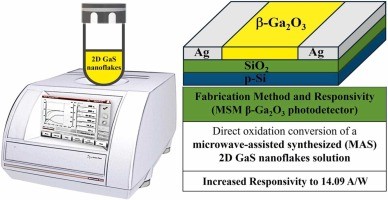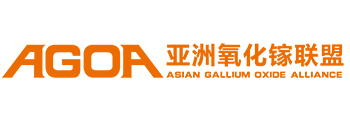

【Device Papers】Enhanced Responsivity β-Ga₂O₃ Photodetectors Enabled by Direct Oxidation of Microwave-Assisted Synthesized Transition Metal Dichalcogenides
日期:2025-04-08阅读:490
Researchers from the National Changhua University of Education have published a dissertation titled "Enhanced Responsivity β-Ga2O3 Photodetectors Enabled by Direct Oxidation of Microwave-Assisted Synthesized Transition Metal Dichalcogenides" in Materials Today Communications.

Abstract
β-Ga2O3 has gained significant research interest because of its promising applications, especially as solar-blind UV photodetectors. However, the fabrication of β-Ga2O3 devices involves complex and expensive methods, which highlights the pressing need for an effective and rapid production approach practical for widescale applications. In this study, a facile and scalable route of synthesizing β-Ga2O3 transition metal oxide (TMO) was successfully demonstrated via direct oxidation of rapid microwave-assisted synthesized (MAS) two-dimensional (2D) GaS nanoflakes. The as-prepared solution of MAS β-Ga2O3 was directly utilized for the fabrication of solar-blind UV photodetectors, resulting in high responsivity. The characteristics of β-Ga2O3 were evidently improved after using the MAS technique. Different laser wavelengths from 254 nm to 808 nm were used to measure the device performance of the β-Ga2O3 photodetectors with the metal−semiconductor−metal (MSM) structure. The photodetector made of MAS β-Ga2O3 demonstrated the highest responsivity of 14.09 A/W and a detectivity of 4.2×1012 Jones at a laser wavelength of 254 nm, while being operated at a forward bias of 5 V. This matches with the optical properties wherein the MAS β-Ga2O3 exhibits a dominant absorption band in the deep ultraviolet region. Furthermore, the maximum achieved responsivity rejection ratios (RRR) for UV/visible and UV/dark were 9.8×103 and 4.9×104, respectively. The fabrication of high-responsive MAS β-Ga2O3 photodetector highlights the innovative synthesis for producing β-Ga2O3 which is substantial for next-generation optoelectronic devices.
DOI:
https://doi.org/10.1016/j.mtcomm.2025.112114


